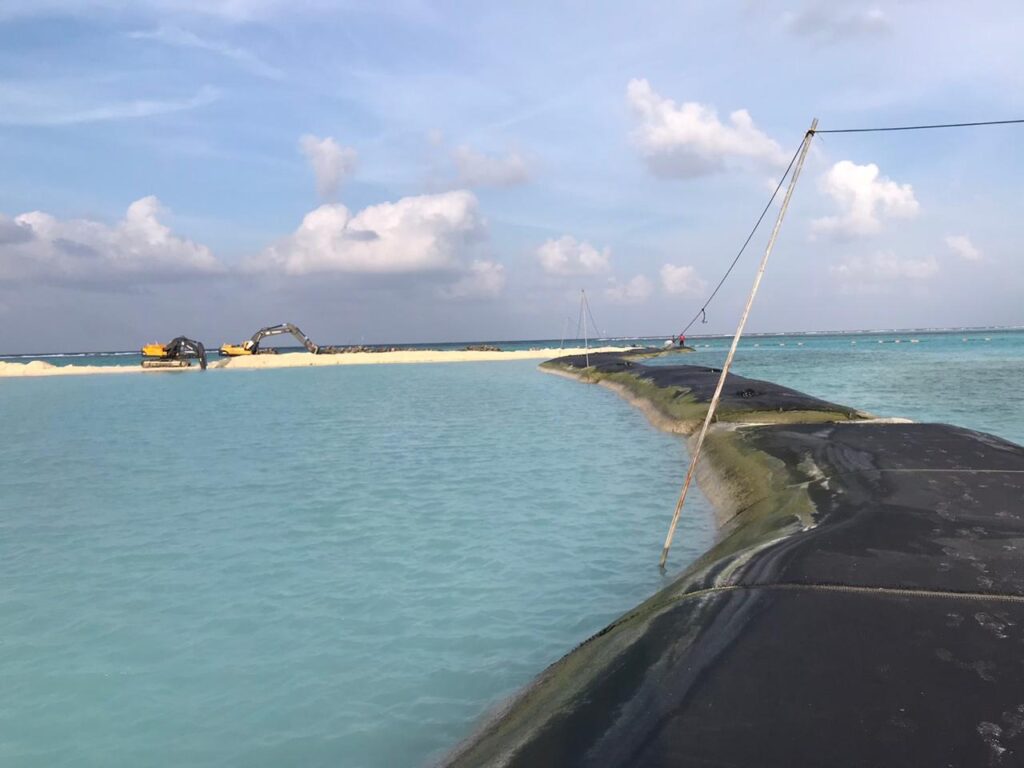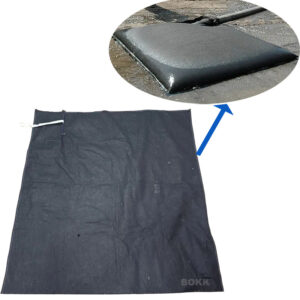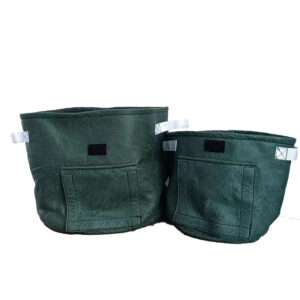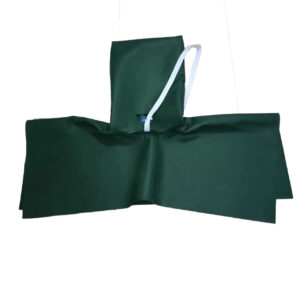 In today’s world, effective water management is more vital than ever, especially as industries grapple with increasing regulatory pressures and environmental concerns. Enter Geotube dewatering bags, a groundbreaking solution that is changing the game. These innovative bags efficiently separate solids from liquids, streamlining the dewatering process while minimizing waste and maximizing resource recovery. Whether in construction, agriculture, or environmental remediation, Geotube technology is redefining how we approach water management challenges. By harnessing the power of Geotube dewatering bags, organizations can enhance operational efficiency, reduce costs, and contribute to a more sustainable future. In this article, we will explore how these revolutionary tools are not just transforming water management practices but also paving the way for smarter, more eco-friendly solutions in various industries. Get ready to dive into the advantages and real-world applications of this cutting-edge technology!
In today’s world, effective water management is more vital than ever, especially as industries grapple with increasing regulatory pressures and environmental concerns. Enter Geotube dewatering bags, a groundbreaking solution that is changing the game. These innovative bags efficiently separate solids from liquids, streamlining the dewatering process while minimizing waste and maximizing resource recovery. Whether in construction, agriculture, or environmental remediation, Geotube technology is redefining how we approach water management challenges. By harnessing the power of Geotube dewatering bags, organizations can enhance operational efficiency, reduce costs, and contribute to a more sustainable future. In this article, we will explore how these revolutionary tools are not just transforming water management practices but also paving the way for smarter, more eco-friendly solutions in various industries. Get ready to dive into the advantages and real-world applications of this cutting-edge technology!
Unlocking Efficiency: How Geotube Dewatering Bags Revolutionize Water Management
The Importance of Water Management in Various Industries
Water management is an essential aspect of operations across various industries, including construction, agriculture, and environmental remediation. Effective water management ensures that resources are used efficiently, waste is minimized, and environmental impacts are mitigated. As industries face increasing regulatory pressures and growing environmental concerns, finding innovative solutions to manage water effectively has become paramount. Proper water management not only helps in complying with regulations but also plays a crucial role in sustaining the environment and conserving valuable resources.
In construction, for instance, managing water is crucial for site dewatering, erosion control, and maintaining the integrity of foundations. Poor water management can lead to delays, increased costs, and environmental hazards. Similarly, in agriculture, efficient water management is vital for irrigation, drainage, and preventing soil degradation. Mismanagement of water resources in agriculture can result in reduced crop yields, soil erosion, and contamination of water bodies.
Environmental remediation projects also require robust water management strategies to handle contaminated water, prevent the spread of pollutants, and restore ecosystems. Effective water management in these projects ensures that contaminants are removed efficiently, protecting both human health and the environment. As these examples illustrate, water management is integral to the success and sustainability of various industries, making innovative solutions like Geotube dewatering bags invaluable.
How Geotube Dewatering Bags Work
 Geotube dewatering bags are a revolutionary technology designed to separate solids from liquids efficiently. These bags are made from high-strength, permeable geotextile fabric that allows water to pass through while retaining solid particles. The process begins by pumping a slurry mixture of water and solids into the Geotube bag. As the mixture enters the bag, the geotextile fabric acts as a filter, trapping the solid particles inside while allowing the water to escape.
Geotube dewatering bags are a revolutionary technology designed to separate solids from liquids efficiently. These bags are made from high-strength, permeable geotextile fabric that allows water to pass through while retaining solid particles. The process begins by pumping a slurry mixture of water and solids into the Geotube bag. As the mixture enters the bag, the geotextile fabric acts as a filter, trapping the solid particles inside while allowing the water to escape.
Over time, the solids inside the Geotube bag consolidate and dewater, reducing in volume and increasing in density. The water that passes through the bag is typically clear and can be safely discharged or reused, depending on the specific application and regulatory requirements. The dewatering process can take anywhere from a few days to several weeks, depending on the type and volume of solids being processed and environmental conditions.
One of the key advantages of Geotube dewatering bags is their simplicity and versatility. They can be used in a wide range of applications and are available in various sizes to accommodate different project needs. Additionally, Geotube dewatering bags can be easily transported and deployed on-site, making them a convenient and cost-effective solution for many industries.
Key Benefits of Using Geotube Dewatering Bags
Geotube dewatering bags offer numerous benefits that make them an attractive option for water management across various industries. One of the primary advantages is their ability to efficiently separate solids from liquids, resulting in significant volume reduction and cost savings. By reducing the volume of solids, Geotube dewatering bags minimize the need for expensive and time-consuming disposal methods, such as hauling and landfilling.
Another significant benefit of Geotube dewatering bags is their environmental impact. By effectively capturing and containing solids, these bags help prevent the release of contaminants into the environment, protecting water bodies and ecosystems. Additionally, the clear water that is discharged from the bags can often be reused or safely returned to the environment, further reducing the ecological footprint of the dewatering process.
Geotube dewatering bags also offer operational flexibility and ease of use. They can be deployed quickly and easily on-site, without the need for complex infrastructure or extensive labor. This makes them an ideal solution for emergency response situations, temporary projects, and remote locations. Furthermore, the durability and long service life of Geotube bags ensure that they can withstand harsh conditions and repeated use, providing a reliable and cost-effective solution for water management.
Applications of Geotube Dewatering Bags in Different Sectors
Geotube dewatering bags have found applications in a wide range of industries, each benefiting from their unique advantages. In the construction industry, these bags are used for site dewatering, sediment control, and erosion prevention. By efficiently separating solids from water, Geotube bags help maintain the stability of construction sites, reduce delays, and minimize environmental impacts.
In the agriculture sector, Geotube dewatering bags play a crucial role in managing irrigation and drainage systems. They help remove sediment and debris from irrigation canals, prevent clogging of drainage systems, and improve water quality for crops. By ensuring efficient water management, Geotube bags contribute to higher crop yields, reduced soil erosion, and sustainable agricultural practices.
Environmental remediation projects also benefit significantly from the use of Geotube dewatering bags. These bags are used to treat contaminated water, capture pollutants, and restore ecosystems. For example, in oil spill response efforts, Geotube bags can be deployed to filter and contain oil-contaminated water, preventing further environmental damage. Similarly, in mining operations, these bags help manage tailings and wastewater, reducing the risk of contamination and improving site rehabilitation efforts.
Environmental Impact and Sustainability of Geotube Solutions
Geotube dewatering bags offer a sustainable solution for water management, with significant environmental benefits. By capturing and containing solids, these bags help prevent the release of pollutants into the environment, protecting water bodies and ecosystems. This is particularly important in industries such as construction, agriculture, and environmental remediation, where the risk of contamination is high.
The clear water that is discharged from Geotube dewatering bags can often be reused or safely returned to the environment, further reducing the ecological footprint of the dewatering process. By recycling water, industries can conserve valuable resources, reduce their reliance on freshwater supplies, and minimize their impact on local water systems. This is especially important in regions where water scarcity is a concern.
Geotube dewatering bags also contribute to sustainability by reducing the need for expensive and resource-intensive disposal methods, such as hauling and landfilling. By minimizing the volume of solids, these bags help lower transportation and disposal costs, reduce greenhouse gas emissions, and decrease the burden on landfill sites. Additionally, the long service life and durability of Geotube bags ensure that they can be used repeatedly, providing a cost-effective and environmentally friendly solution for water management.
Case Studies: Successful Implementation of Geotube Dewatering Bags
Numerous case studies highlight the successful implementation of Geotube dewatering bags across various industries. In one notable example, a construction project in a coastal area faced significant challenges with site dewatering and sediment control. Traditional methods proved ineffective and costly, leading to delays and environmental concerns. By deploying Geotube dewatering bags, the project team was able to efficiently separate solids from water, stabilize the site, and complete the project on time and within budget.
In the agriculture sector, a large-scale irrigation system in a drought-prone region faced issues with sediment buildup and water quality. The use of Geotube dewatering bags helped remove sediment and debris from irrigation canals, improving water flow and quality for crops. As a result, the agricultural operation experienced higher crop yields, reduced soil erosion, and more efficient water use, contributing to long-term sustainability.
Environmental remediation projects have also benefited from the use of Geotube dewatering bags. In one instance, a mining operation faced challenges with managing tailings and wastewater, posing a risk of contamination to nearby water bodies. By implementing Geotube dewatering bags, the operation was able to effectively capture and contain tailings, treat wastewater, and prevent environmental damage. This successful implementation not only improved the site’s environmental performance but also ensured compliance with regulatory requirements.
Comparing Geotube Dewatering Bags to Traditional Dewatering Methods
When compared to traditional dewatering methods, Geotube dewatering bags offer several distinct advantages. Traditional methods, such as mechanical dewatering, chemical treatment, and settling ponds, often involve complex infrastructure, high operational costs, and significant environmental impacts. In contrast, Geotube dewatering bags provide a simple, cost-effective, and environmentally friendly solution for separating solids from liquids.
Mechanical dewatering methods, such as centrifuges and filter presses, require significant energy inputs, maintenance, and skilled labor. These methods can be costly and may not be suitable for all types of solids or site conditions. Geotube dewatering bags, on the other hand, require minimal energy and maintenance, making them an attractive option for a wide range of applications. Their ease of use and flexibility allow for quick deployment and efficient operation, even in remote or challenging locations.
Chemical treatment methods involve the addition of chemicals to the slurry mixture to facilitate the separation of solids and liquids. While effective, these methods can be costly, generate secondary waste streams, and pose environmental and health risks. Geotube dewatering bags eliminate the need for chemical additives, reducing costs and minimizing environmental impacts. The permeable geotextile fabric used in Geotube bags effectively filters solids without the need for additional treatment, resulting in clear, reusable water.
Settling ponds are another traditional method for dewatering, involving the use of large ponds to allow solids to settle out of the water over time. While relatively simple, settling ponds require significant land area, can take weeks or months to achieve the desired level of dewatering, and pose risks of contamination and environmental damage. Geotube dewatering bags offer a more efficient and compact solution, with faster dewatering times and reduced risk of environmental impacts. Their modular design allows for scalability and adaptability to different project needs.
Tips for Selecting the Right Geotube Dewatering System
Selecting the right Geotube dewatering system for your specific application requires careful consideration of several factors. First, assess the type and volume of solids you need to dewater. Different types of solids, such as fine silt, sand, or organic matter, may require different geotextile fabrics and bag sizes. Understanding the characteristics of the slurry mixture will help you choose the most effective Geotube system for your needs.
Next, consider the environmental conditions and site constraints. Factors such as temperature, humidity, and available space can impact the dewatering process and the performance of the Geotube bags. Ensure that the selected system is suitable for the specific conditions of your project site and can be easily deployed and operated within the available space.
It’s also important to evaluate the regulatory requirements and environmental standards for your project. Ensure that the selected Geotube dewatering system complies with all relevant regulations and can achieve the required levels of water quality and solid containment. Consulting with experts and suppliers can help you navigate these requirements and select the most appropriate system for your needs.
Finally, consider the long-term operational and maintenance needs of the Geotube system. While Geotube dewatering bags are designed for ease of use and durability, regular monitoring and maintenance are essential to ensure optimal performance. Establish a maintenance plan that includes regular inspections, cleaning, and replacement of bags as needed. Proper maintenance will extend the life of the Geotube system and ensure consistent, efficient dewatering.
Conclusion: The Future of Water Management with Geotube Technology
As industries continue to face increasing regulatory pressures and environmental challenges, innovative solutions like Geotube dewatering bags are becoming essential tools for effective water management. By efficiently separating solids from liquids, minimizing waste, and maximizing resource recovery, Geotube technology is revolutionizing how we approach water management challenges across various sectors.
The benefits of Geotube dewatering bags extend beyond operational efficiency and cost savings. Their environmental impact and sustainability make them a valuable solution for industries looking to reduce their ecological footprint and contribute to a more sustainable future. By preventing the release of contaminants, conserving water resources, and reducing the need for resource-intensive disposal methods, Geotube dewatering bags play a crucial role in protecting our environment.
Looking ahead, the future of water management with Geotube technology is promising. Continued advancements in geotextile materials, bag design, and deployment techniques will further enhance the performance and versatility of Geotube dewatering bags. As more industries adopt this innovative technology, we can expect to see even greater improvements in operational efficiency, environmental protection, and sustainability. By unlocking the full potential of Geotube dewatering bags, we can pave the way for smarter, more eco-friendly solutions to water management challenges in the years to come.




